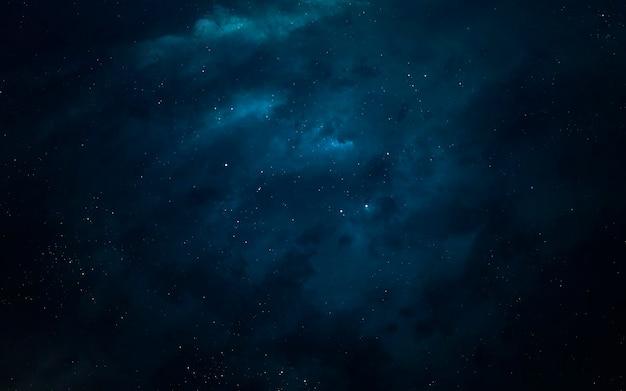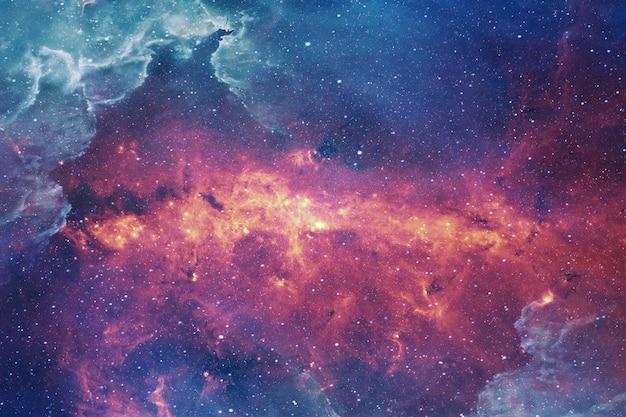Welcome to the intriguing realm of interstellar clouds! Have you ever wondered what lies beyond our planet and within the vast expanse of space? Well, these celestial wonders offer us a glimpse into the mesmerizing beauty and mysteries of the universe.
In this blog post, we will dive into the captivating world of interstellar clouds, those magnificent formations scattered throughout the vastness of interstellar space. We will uncover what exactly they are, the composition of their gas and dust, and the intriguing structures they hold within galaxies. So, fasten your seatbelts and get ready for a cosmic adventure like no other!
So, what exactly is an interstellar cloud of gas and dust called? Join us as we unravel the secrets of these cosmic wonders and embark on a journey through the interstellar realms.

What is an Interstellar Cloud of Gas and Dust Called?
Introduction to Interstellar Clouds
Interstellar clouds are like the celestial dust bunnies of the universe. They are vast, enigmatic formations made up of gas and dust that float gracefully through the cosmos. These clouds can range in size from a few light-years to hundreds of light-years across and are scattered throughout galaxies like lost puzzle pieces. But what exactly is an interstellar cloud of gas and dust called? Well, my stargazing friends, they go by the name “Nebulae.”
Nebulae: The Cosmic Art Galleries
Nebulae, derived from the Latin word for “cloud,” are the captivating birthplaces of new stars. They are cosmic art galleries, showcasing breathtaking displays of vibrant colors and ethereal shapes. Think of them as the Monets and Picassos of the universe, only instead of paint, they are created by the interplay of gravity, radiation, and interstellar medium.
The Different Types of Nebulae
-
Emission Nebulae: These nebulae are like the neon signs of the galaxy, emitting their own light like cosmic light bulbs. They owe their brilliance to the fierce energy radiated by nearby massive stars. One famous example is the Orion Nebula, a vibrant celestial masterpiece located in the constellation Orion.
-
Reflection Nebulae: Picture this: a cosmic mirror bouncing the starlight off its surface. That’s precisely what reflection nebulae do. These ethereal clouds of dust scatter and reflect the light from nearby stars, creating celestial spectacles that would make even the most skilled magician envious.
-
Dark Nebulae: Unlike their shimmering counterparts, dark nebulae are the universe’s version of cosmic light absorbers. These dense clouds of dust block out the light behind them, creating eerie patches of darkness against a backdrop of stars. The Horsehead Nebula is a prime example of these mysteriously mesmerizing celestial silhouettes.
The Role of Interstellar Clouds
Nebulae play a vital role in the grand cosmic ballet. Within their dusty tendrils, gravity works its magic, causing pockets of gas to collapse and become denser. The intense pressure and temperature within these collapsing regions give birth to new stars, illuminating the darkness with their fiery brilliance. Without these interstellar clouds, the universe would be a much lonelier and dimmer place.
The Beauty of the Cosmos Unveiled
So, the next time you gaze up at the star-studded sky, take a moment to appreciate the celestial artistry of interstellar clouds. Nebulae are not just haphazard collections of gas and dust; they are the magnificent birthplaces of stars and the keepers of the universe’s beauty. From their vibrant emissions to their awe-inspiring reflections, these cosmic clouds are truly captivating jewels scattered throughout the vast expanse of the cosmos. So, let your imagination soar as you ponder the mysteries and marvels of these interstellar wonders.
In conclusion, interstellar clouds of gas and dust, known as nebulae, are the celestial artists that grace our night skies. Emission nebulae light up like neon signs, reflection nebulae function as cosmic mirrors, and dark nebulae cast enigmatic shadows against the tapestry of stars. These clouds play a crucial role in the formation of stars, letting new cosmic actors take center stage. So, grab your telescope and prepare to be dazzled by the wonders of the universe, courtesy of these captivating interstellar clouds.

FAQ: Interstellar Clouds of Gas and Dust
Who owns the moon
The moon is not owned by any individual or country. According to the Outer Space Treaty of 1967, the moon is considered the common heritage of mankind, and no nation can claim sovereignty over it.
What are the two most common molecules in such clouds
The two most common molecules found in interstellar clouds of gas and dust are molecular hydrogen (H2) and carbon monoxide (CO). These molecules play a crucial role in the formation of stars and planetary systems within these clouds.
What is the dust of an interstellar cloud made of
The dust in interstellar clouds is made up of tiny particles, composed mainly of carbon, silicon, and other elements. These particles can range in size from tiny grains to larger debris, and they play a crucial role in the process of star formation.
How dark is interstellar space
Interstellar space is incredibly dark, but it’s not pitch black. It is illuminated by background radiation from stars, galaxies, and other cosmic sources. However, the density of particles in interstellar space means that the light is scattered and absorbed, making it much darker than the night sky on Earth.
What are the main structures within a galaxy
Galaxies contain various structures, including stars, planets, asteroids, comets, nebulae, and stellar clusters. They can also have spiral arms, which are long, winding regions extending from the center of the galaxy, and a central bulge where more densely packed stars reside.
How cold is interstellar space
Interstellar space is extraordinarily cold, with temperatures averaging around -270 degrees Celsius (-454 degrees Fahrenheit). With such frigid temperatures, it’s essential for celestial objects to have mechanisms for generating heat to maintain their existence.
How many celestial bodies are in space
Space is teeming with countless celestial bodies, including stars, planets, moons, asteroids, comets, and more. While the exact number is difficult to determine, there are estimated to be billions of galaxies out there, each containing billions or even trillions of celestial objects.
What is inside a black hole
Inside a black hole, the laws of physics, as we understand them, break down. It is believed that at the very center of a black hole lies a singularity—an infinitely small and dense point where all matter is concentrated. Surrounding the singularity is the event horizon, a boundary beyond which nothing, not even light, can escape.
Is a cloud a gas
Yes, a cloud is made up of tiny droplets or ice crystals suspended in the air. Clouds form when warm, moist air rises and cools, causing the moisture to condense into visible droplets. While clouds appear to be solid, they are actually composed of numerous tiny water droplets or ice crystals.
What is a plasma cloud
A plasma cloud is a highly energized state of matter, similar to a gas but with charged particles. It is formed when atoms or molecules gain or lose electrons, resulting in an electrically conductive substance. Plasma clouds can be found in various astronomical contexts, such as around stars, in the tails of comets, or in the interstellar medium.
Can I jump off the moon
While the moon has lower gravity than Earth, you can’t simply jump off its surface and fly into space. The moon’s gravity is about one-sixth of Earth’s gravity, which means you can jump higher and move with ease, but you would still be bound by its gravitational pull. To escape the moon’s gravity, you would need to reach the velocity required for a successful lunar launch.
How long is one hour in space
In space, the concept of time is different due to factors such as the lack of gravity and the speed of objects in motion. However, for practical purposes, one hour in space is the same as one hour on Earth. Astronauts aboard the International Space Station still follow a 24-hour day, with periods of sleep, work, and leisure, just like on our home planet.
Are there any bodies in space
Space is vast and constantly filled with a plethora of celestial bodies. There are countless stars, planets, moons, comets, asteroids, and other cosmic objects moving through the universe. Some of these objects are well-known and have been extensively studied, while many others remain undiscovered and await exploration.
What is an interstellar cloud of gas and dust called
An interstellar cloud of gas and dust is called a Molecular Cloud. These clouds are vast, cool regions in the interstellar medium composed mostly of molecular hydrogen, but also containing other molecules such as carbon monoxide. Within these molecular clouds, new stars and planetary systems can form.
Has anyone been in a black hole
Nobody has ever been inside a black hole or witnessed what happens beyond its event horizon. The extreme gravitational forces inside a black hole would stretch and distort anything that approaches it, leading to what scientists refer to as “spaghettification.” Fortunately, no human-made or natural spacecraft has ventured close enough to experience such a fate.
What is an interstellar cloud called
An interstellar cloud of gas and dust is commonly referred to as an Interstellar Nebula. These nebulae serve as the birthplaces of stars and are often categorized into different types based on their appearance and composition. Examples include emission nebulae, reflection nebulae, and dark nebulae, each showcasing their unique characteristics.
FAQ content generated by OpenAI’s GPT-3 language model.
